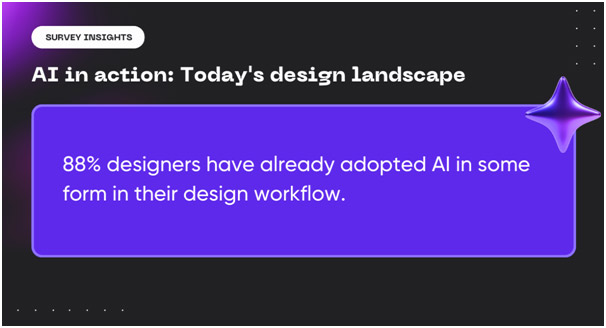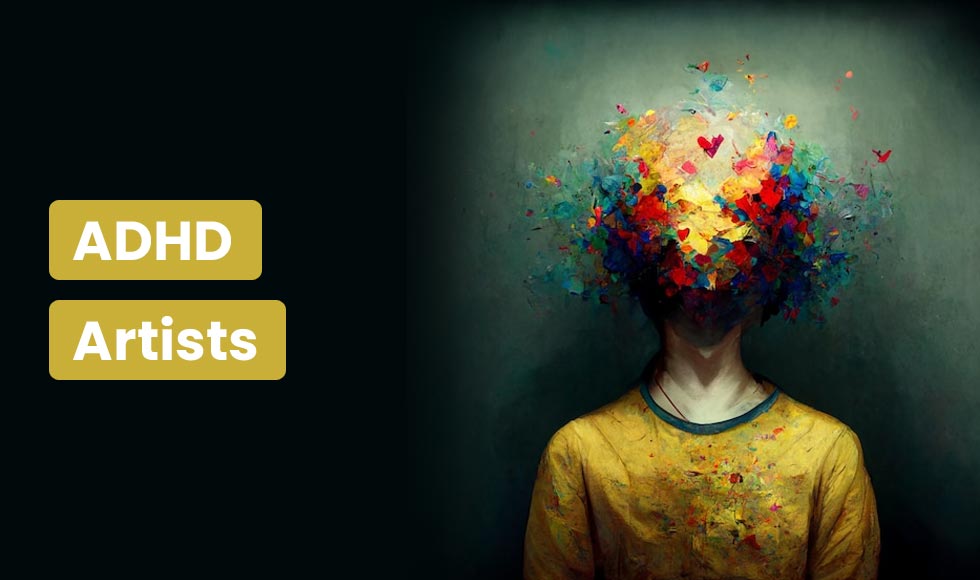As you face the blank screen, the design journey begins—a delicate balance of creativity and functionality. But now, there’s a twist: AI is revolutionizing design. Instead of replacing humans, it collaborates with us, empowering us to elevate our abilities and transform tasks into collaboration.
AI and user experience blend seamlessly, producing designs that are both beautiful and intuitive. Integrated AI tools empower us to iterate, experiment, and execute at unprecedented speeds.
In this transformative era, AI is not just a tool but a true design collaborator, propelling us towards innovation. Let’s delve into the design process, shall we?
What is Design Process<
Creating anything, from smartphones to intuitive apps, involves a critical journey: the design process. It’s a roadmap for creativity, focusing not just on aesthetics but on solving problems with both beauty and functionality.
The design process includes several key steps:
- Understanding the problem
- Researching
- Brainstorming ideas
- Prototyping
- Testing
- Iterating
This cycle, where feedback refines ideas until they perfectly meet user needs, is vital because it’s rooted in understanding and empathy. Deep diving into users’ worlds allows designers to create experiences that are not only functional but deeply resonant, ensuring products are not just usable but delightful.
The introduction of AI in design is further revolutionizing this process, automating time-consuming tasks and providing insights beyond human analysis. This isn’t about replacing designers but enhancing their capabilities, enabling more accurate predictions of user behavior and faster iterations.
As AI reshapes design, the core process is turbocharged with AI capabilities, merging artificial intelligence and user experience to redefine the design landscape. This evolution promises a future where AI-integrated design deeply understands and anticipates user needs.
Rise of AI in Design
As you step inside the design process, you’ll be amazed by the power of AI in design. Your brainstorming session becomes a seamless journey, guided by an intelligence that surpasses imagination. Your drafting table becomes a trusted companion, absorbing knowledge from every interaction.

The design process, a journey that traditionally involves a deep dive into human needs, creativity, and iterative refinement, is undergoing a transformation. Artificial intelligence is not just knocking on the door; it’s redesigning the doorway. AI in designing is revolutionizing how we approach problems, offering solutions that were previously unthinkable. With the integration of small language models, these AI-driven solutions become even more accessible and adaptable to specific design challenges.
Transforming Creativity and Efficiency
AI’s impact on the design process is undeniable. From suggesting design adjustments to predicting trends, and even generating original elements, AI is revolutionizing creativity and efficiency.
According to our recent survey on “Impact of AI on design industry” where we found out from 416 design professionals, spanning freelancers to corporate settings and design agencies, AI is unanimously recognized as a game-changer in the industry.

AI algorithms sift through years of design trends to predict the next big thing, while machine learning models anticipate user needs before they’re articulated, enhancing user experience.
This impact extends across experience levels, from novices to seasoned veterans, with AI leveling the playing field and empowering every designer to innovate and transform.
Enhancing Personalization and Accessibility
When it comes to personalization, AI in designing is like a skilled tailor, meticulously crafting the user experience to suit each individual. Nearly half of the designers we surveyed are already harnessing AI to personalize at scale, ensuring designs meet the unique tastes and needs of users.
AI is also breaking down barriers to entry in the design world. It’s empowering those without formal training, allowing them to contribute to the design process with tools that simplify complexity. This is design by artificial intelligence at its most inclusive, opening doors to a myriad of creative perspectives.
Empowering Data-Driven Decisions
The collaboration of artificial intelligence and user experience is forging a path for more informed, data-driven decisions. By sifting through user data, AI tools are offering up insights with precision, helping designers iterate and refine their work swiftly and smartly. As per our study, this is not a benefit but a core feature of AI in designing, with designers across the spectrum leveraging these insights.
Yet, as we integrate AI into the design process, we must tread carefully. Navigating the ethical maze that accompanies AI tools is paramount, as highlighted by our surveyed design professionals. It’s about balancing the technological prowess of AI with the moral compass that guides the human side of design.
Budget: The Invisible Barrier
And let’s not forget about the money talk. Budget constraints can stifle the integration of AI, as pointed out by 24% of our respondents. This invisible barrier often stands between designers and the advanced AI tools that could revolutionize their work.
With all its potential to enhance design, artificial intelligence and user experience must be handled with care, ensuring that each tool is not just a shiny new gadget but a meaningful addition to the designer’s palette.
Next up, we’ll discuss the “Limitations of AI in Design”, taking a critical look at the hurdles and ethical dilemmas designers face as they see AI with human creativity.
Limitations of AI in Design Process
While AI brings unprecedented efficiency and innovation to design, it’s essential to acknowledge its limitations. Our survey reveals concerns regarding design quality, accuracy, and the maintenance of AI systems. Balancing the power of AI with the human touch is critical to navigating these challenges.

- The Human-Centered Approach: AI should complement human decision-making rather than replace it, emphasizing the importance of human intuition in the design process.
- Accuracy and Stability: While AI offers efficiency, concerns about its accuracy and reliability remain significant, highlighting the need for precise and stable AI tools.
- Maintenance and Upkeeping: The ongoing maintenance of AI systems poses challenges, adding hidden costs to the design process, emphasizing the need to prepare for continuous upkeep.
In conclusion, Despite AI’s potential, addressing these limitations is crucial, emphasizing the balance between AI capabilities and human intuition for a harmonious future in design.
AI tools for Design Process
The design process has been transformed into something extraordinary with the help of AI tools, making designers feel like they have superpowers. Let’s chat about a few that are changing the game for designers everywhere.
Adobe Sensei
Adobe Sensei is an AI-powered assistant integrated into Adobe’s suite of design tools, facilitating tasks like image cropping and audience targeting to streamline the design process.
Canva
Canva is a user-friendly design platform that leverages artificial intelligence to suggest layouts, fonts, and images, catering to users of all skill levels and enhancing design outcomes.

Figma
Figma is a collaborative design tool enabling teams to work together seamlessly on projects, regardless of location, and its integration of AI enhances efficiency by harnessing collective creativity for a smoother workflow.
Conclusion
As we’ve gone through the design process, we’ve seen how AI in designing is not just a wave of the future—it’s the here and now, reshaping our creative landscapes. The design process, once a straight path from concept to completion, has evolved into a dynamic ecosystem where design by artificial intelligence offers new possibilities at every turn.
But let’s remember, as much as the design process has been transformed by AI, the core of design remains unchanged—the desire to connect, to solve, to enhance the human experience. AI in designing isn’t replacing the designer; it’s becoming their most valuable collaborator.
The future of design is a collaboration of AI and user experience, working hand in hand with designers to create experiences that were once mere figments of imagination. And as we continue to navigate this future, one thing is certain—the design process will continue to be an adventure, one that’s more exciting than ever before.
FAQs
How generative ai is changing creative work?
Generative AI is revolutionizing creative work by automating repetitive tasks, inspiring novel ideas, and expanding the creative possibilities for designers and artists.
What is the best AI for design?
The best AI for design depends on specific needs and preferences, with popular options including Adobe Sensei, Runway ML, and DeepArt.
How can AI optimize design?
AI can optimize design by streamlining repetitive tasks, providing data-driven insights, and facilitating rapid iteration and experimentation.











